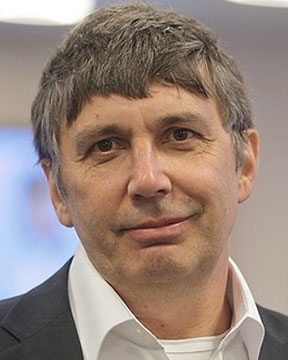ORALS
SESSION: ManufacturingWedPM2-R4
Environmental Aspects / Impact on Climate Change | Mamalis International Symposium on Advanced Manufacturing of Advanced Materials and Structures with Sustainable Industrial Applications |
| Wed Nov, 7 2018 / Room: Sao Conrado (50/2nd) | |
| Session Chairs: Sesh Commuri; Session Monitor: TBA |
16:45: [ManufacturingWedPM211]
Reduction of Transport Impact on Air Quality due to New Conception of Hydrogen Storage Tetiana
Prikhna1 ;
Mykola
Monastyrov2 ; Petro
Talanchuk
3 ;
Athanasios G.
Mamalis4 ;
Fernand
Marquis5 ; Bernd
Halbedel
6 ;
1Institute for Superhard Materials, Kiev, Ukraine;
2Open International University of Human Development Ukraine, Kiev, Ukraine;
3Open International University of Human Development Ukraine, Kyiv, Ukraine;
4PC-NAE, Demokritos National Center for Scientific Research, Athens, Greece;
5San Diego State University, San Diego, United States;
6Technische Universitat Ilmenau, Ilmenau, Germany;
Paper Id: 140
[Abstract] The new conception of hydrogen production on the board of transport vehicles was due to the reaction of metallic Al powder produced by the developed high productive electroerosion dispersion (EED) method with slightly alkaline water [1]. The developed EED method allows production of Al powder of 98% purity with spherical shape 0.05 - 3-5 microns particles (with near 8 vol.% of 0.05-0.1 microns particles), specific surface up to 120 m2/gr (determined in accordance with the ISO 10076). The poly-dispersed nature of the Al powder permits its dense packing qua PAS. The presence of a nanofraction enables a short reaction induction period. It is mainly due to the presence of nanoparticles that the reaction response time is lowered from 7 to 2 s, which in the case of a transport vehicle will enable the essential volume minimization of the intermediate container. As a result of the reaction of one kilogram of aluminum powder, more than 111 grams of hydrogen are released, which is equivalent to 1.23 m3 of gaseous hydrogen (taking the hydrogen density to be 0.09 kg/m3 at 18°C and 0.1 MPa). The packed density of the aluminium powder was determined with the help of a Scott volumeter according to ISO 3923-2, and was found to be 1240 kg/m3. From a volume of one litre filled with this powder, 1.52 m3 of gaseous hydrogen can be obtained.
Further, the systematic approach to reduce heat dissipation and increase efficiency will be realized due to the use of advanced thermoelectrical transformation systems and new type of propulsion engine.
References:
[1] M. Monastyrov, T. Prikhna, A. G. Mamalis, W. Gawalek, P. M. Talanchuk, R. V. Shekera, Electroerosion dispersion-prepared nano- and submicrometre-sized aluminium and alumina powders as power-accumulating substances, Nanotechnology Perceptions. 4 (2008), 179-187
SESSION: AdvancedMaterialsMonPM2-R6
| 4th Intl. Symp. on New and Advanced Materials and Technologies for Energy, Environment and Sustainable Development |
| Mon Nov, 5 2018 / Room: Guaratiba (60/2nd) | |
| Session Chairs: Joseph Newkirk; Session Monitor: TBA |
16:20: [AdvancedMaterialsMonPM210] Invited
Electroerosion Coagulation and Dispersion for Complex Water Purification, Waste Recycling and Manufacturing of Metals, Oxides, and Alloys Nanopowders Mykola
Monastyrov1 ;
Tetiana
Prikhna2 ; Bernd
Halbedel
3 ; Gennadii
Kochetov
4 ;
Fernand
Marquis5 ;
1Open International University of Human Development Ukraine, Kiev, Ukraine;
2Institute for Superhard Materials, Kiev, Ukraine;
3Technische Universitat Ilmenau, Ilmenau, Germany;
4NATIONAL UNIVERSITY OF CONSTRUCTION AND ARCHITECTURE, Kyiv, Ukraine;
5San Diego State University, San Diego, United States;
Paper Id: 122
[Abstract] The application of electroerosion coagulation together with in-situ manufactured polyvalent powdered aluminium oxides and iron oxides allowed efficient water purification from heavy metal ions and radioactive alkali ions (Fe, Cr, Cu, Mo, Zn, Co, Ni, Cd, Mn, As, Sn, Pb, Al, Ba, Cs and Sr) as well as from organic contaminations (from the liquid waste landfills, in particular) [1]. The method of electroerosion dispersion is very effective for production of nanopowders (5-500 nm) of metals, oxides, nitrides and carbides, as well as for recycling of any conductive materials such as cemented carbides, alloys of heavy metals, any metallic granules or chips, cans, etc [2]. The iron magnetic nanoparticles produced by electroerosion dispersion have considerable interest in many fields of research and application due to their attractive properties. They have high potential for applications in the field of biomedical sciences (diagnostics and therapy), ferrofluids, catalysis, colored pigments, high-density magnetic recording, printer toners, Li-ion batteries, wastewater treatment and absorption of electromagnetic waves.
References:
[1] M. Monastyrov, T. Prikhna, B. Halbedel, P. Talanchuk, G. Kochetov, A. Vasiliev, M. Eisterer, F. D. S. Marquis, New technology for the integrated treatment of industrial and landfills waste water using iron and aluminum oxides nanopowders, In: Proceedings 2017 Sustainable Industrial Processing Summit and Exhibition, Volume 5: marquis Intl. Symp./ New and Advanced Materials &Technologies for Energy, Environment, and Sustainable Development, Edited by: F.Kongoli, F. Marquis, N. Chikhradze, Flogen, 2017, 346-355.
[2] M. Monastyrov, T. Prikhna, A. G. Mamalis, W. Gawalek, P. M. Talanchuk, R. V. Shekera, "Electroerosion dispersion-prepared nano- and submicrometre-sized aluminium and alumina powders as power-accumulating substances, Nanotechnology Perceptions", 4 (2008), 179-187



















